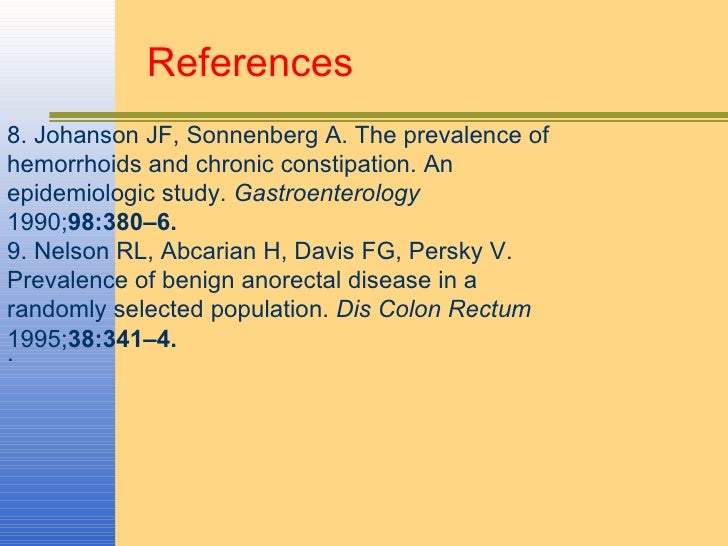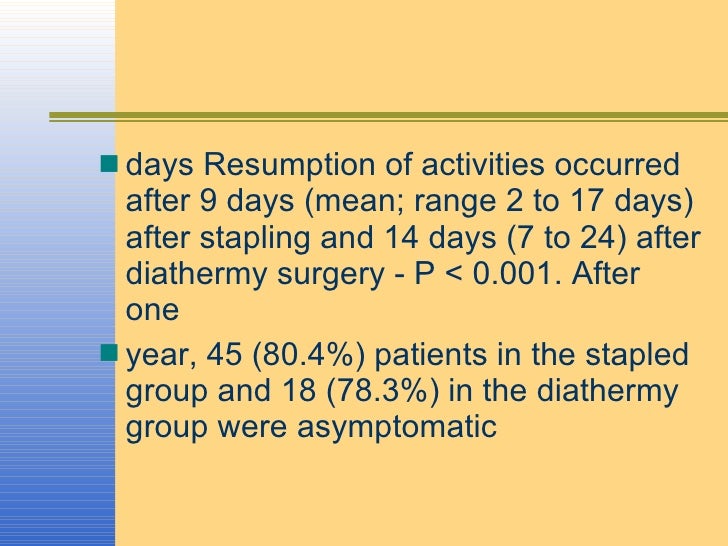

Vector volume also decreased after standard hemorrhoidectomy in men (preoperative 546 ± 257 postoperative 357 ± 266 mm Hg P < 0.05) and women (preoperative 619 ± 132 postoperative 371 ± 190 mm Hg P < 0.05) and after stapled hemorrhoidopexy in men (preoperative 595 ± 220 postoperative 349 ± 126 mm Hg P < 0.05) and women (preoperative 566 ± 174 postoperative 394 ± 133 mm Hg P < 0.05). Mean resting pressure significantly decreased after standard hemorrhoidectomy in both men (preoperative 54 ± 14 postoperative 40 ± 13 mm Hg P < 0.05) and women (preoperative 56 ± 10 postoperative 40 ± 10 P < 0.05), and also after stapled hemorrhoidopexy in both men (preoperative 52 ± 8 postoperative 37 ± 8 mm Hg P < 0.05) and women (preoperative 51 ± 8 postoperative 43 ± 10 mm Hg P < 0.05). There were no significant differences in preoperative basal anal pressures between the 2 groups, or between men (53 ± 10 mm Hg) and women (54 ± 9 mm Hg). Microscopically, muscle fibers were detected in all stapled hemorrhoidopexy specimens and in 7 excisional hemorrhoidectomy specimens, but these findings did not correlate with postoperative pressure changes. RESULTS: Three patients after the stapled procedure and 2 patients after conventional hemorrhoidectomy experienced transient incontinence to gas none of the patients were incontinent 3 months after surgery.

Manometric changes were compared in the 2 groups using Student t test a P ≤ 0.05 was considered significant. Anorectal manometry was performed before and 3 months after surgery. Patients were randomized to receive stapled hemorrhoidopexy or standard Ferguson hemorrhoidectomy. MATERIALS AND METHODS: Twenty patients (10 men and 10 nulliparous women) with third-degree symptomatic hemorrhoids were recruited for the study.

The aim of this study was to compare the effects of standard and stapled hemorrhoidopexy on anal sphincter function. Stapled hemorrhoidopexy has recently been gaining acceptance as an alternative surgical procedure for the treatment of prolapsed, well-reducible hemorrhoids. OBJECTIVE: Symptomatic hemorrhoids are a very common disease and are known to induce specific manometric changes that are reversed by excisional surgery.


 0 kommentar(er)
0 kommentar(er)
